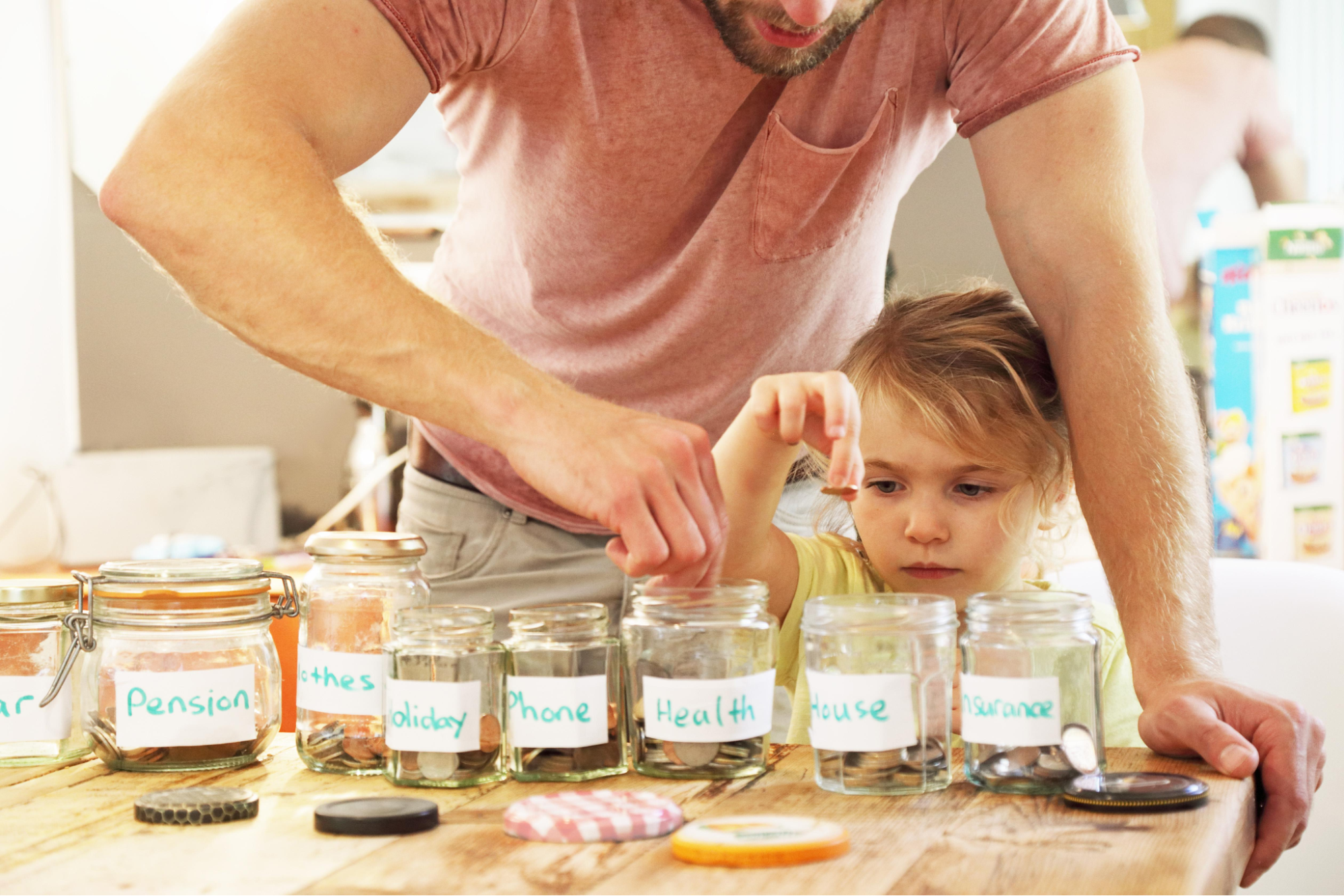General Interest - Personal
Financial Planning
The Three Jar Method: Raising Financially Responsible Kids And Building Savings Habits Early
September 21, 2021
I get asked this question a lot: “How do I teach my children the value of money?”
There is no one answer. There is no one method.
There are a million ways you can teach your children about money. But I’d like to share the method I started with my own daughter when she was just 9 years old that has not only encouraged her to start saving for her future early but inspired her to be charitable and led to some of the prouder moments I’ve experienced as a father.
Here’s how I did it.
The three jar method.
When my daughter came to me and my wife asking for an allowance, I took this as an opportunity to not just give her money, but to teach her the value of a dollar. We sat down as a family and came up with a simple chore list that was appropriate for a kid her age and a dollar amount that we thought was a fair payment for those chores: $5 per week.
But I didn’t want it to stop there. I took my daughter with me to a craft store, and we purchased three jars. When we got home, she labeled them “Long-Term,” “Charity” and “Fun.”
Each week when she finished her chore list, she was given five $1 bills and instructed to put $1 in the long-term jar, $1 in the charity jar and the other $3 she could put wherever she wanted.
Teaching her to save.
The long-term jar was her savings account. It grew each week with her deposits, and when it was full, I took her to the bank. We opened a simple savings account and deposited the contents of her jar.
Most basic savings accounts offer very little interest, and her modest monthly savings wasn’t going to result in a hefty balance. So, to demonstrate the concept of matching contributions that she will need to know when she’s older, I matched her deposit with my own money. She instantly saw her balance double and felt rewarded for the effort she put into growing her savings.
Teaching her philanthropy.
When the charity jar was filled, we went online and researched organizations that she could identify with and feel passionate about helping. We picked one organization that helped animals and one that helped children who were sick.
Again, I matched the amount she had put away and then we went to the charities and handed in her donations. I didn’t need to ask her how it made her feel. She was beaming.
What made me so proud?
Well, simple. She’s my daughter and I am proud of all of her accomplishments and good decisions. But this brought an experience that surprised me in the best way.
Each week, after the first $2 were deposited into the long-term and charity jars, I expected the final $3 to go straight towards the fun jar. Sometimes it did.
But some weeks, she looked at me and said, “I have enough fun money right now,” and rerouted those dollars to long-term or charity. As a financial advisor, I naturally loved this, but as a father, this nearly brought a tear to my eye.
By giving her the options to do what she wanted with her money and showing her the opportunities for that money that went beyond toys and games, she made the decision herself to put more money towards her future or towards a deserving charity. She did, at nine years old and without any prompting, the exact thing I try to encourage clients to do every day.
The lesson:
Teaching your children how to handle money isn’t difficult. It simply takes time, patience, and the freedom for them to learn it in their own way.
What I have found after more than two decades in the personal finance industry is that talking about money—especially with children—is not something anyone seems comfortable doing. But taking that time to talk about the value of a dollar and how that dollar can make a difference in the world will be worth more than you may think. And sometimes, it only takes a couple jars.
© 2020 Forbes Media LLC. All Rights Reserved
This Forbes article was legally licensed through AdvisorStream.
Credit: AdvisorStream and Forbes
Related Posts



